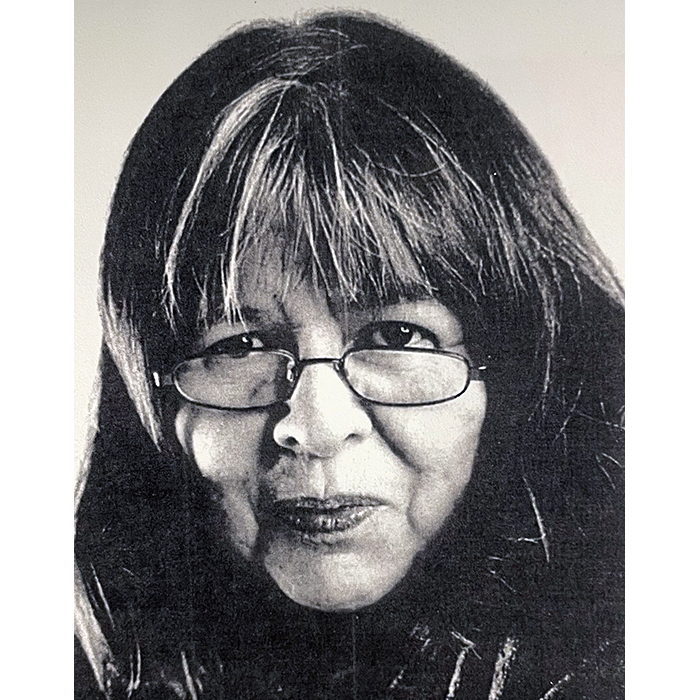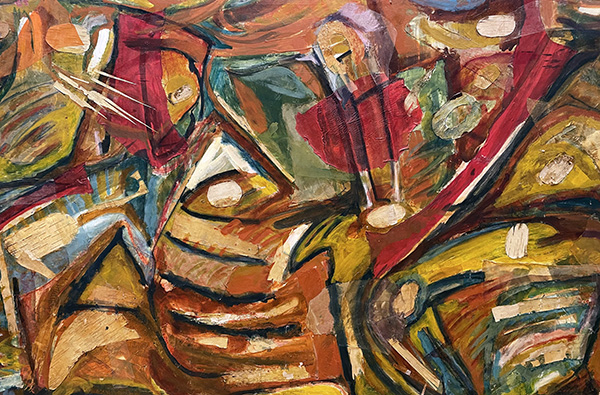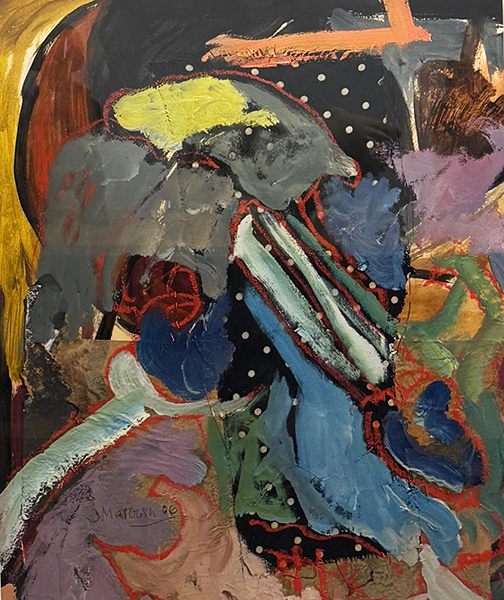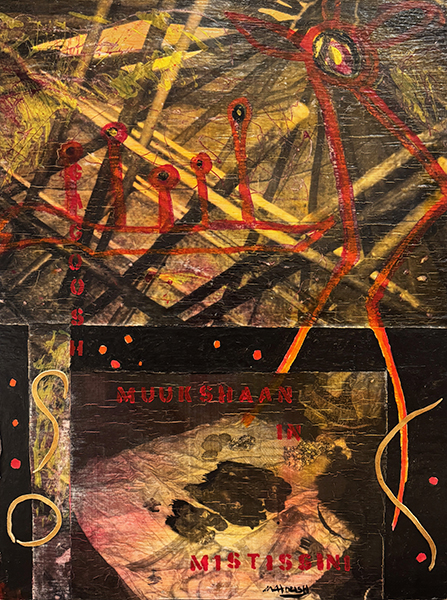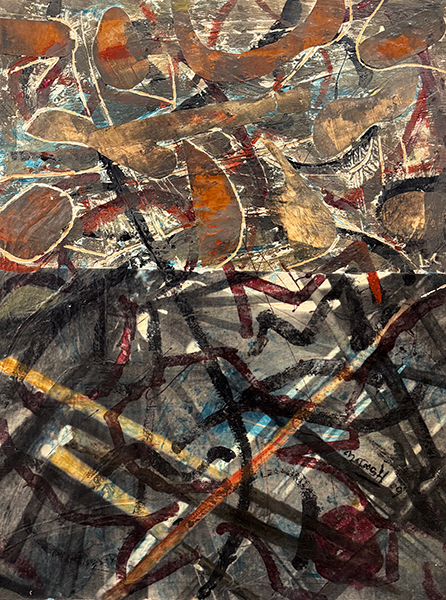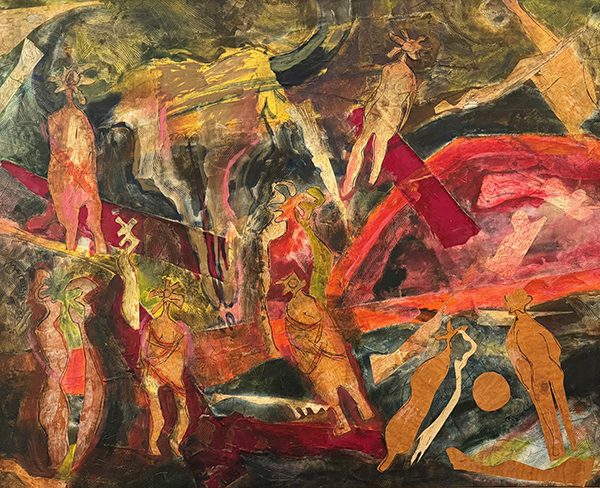Glenna Matoush
(1946-2025) - Artist Biography
Glenna Matoush was born in 1946 on the Rama Reserve near Orillia, Ontario. The ninth child of thirteen in the Shilling family, she and her siblings were raised in small living quarters she describes as a "two room shack." Due to bouts of poverty and hardship that her family experienced, half of the Shilling children spent intervals at residential schools in Brantford and Sault Ste Marie, Ontario in order for her family to make ends meet. Matoush endured one at the Mohawk Institute in Brantford. Her interest in art began at an early age and was influenced by her two older brothers, William and Arthur, who both painted. When William left for Toronto at the age of fourteen he handed down his oil paints to Arthur. When Glenna was nine, she affectionately recalls the teenaged Arthur asked her what colours he should use to mix skin tones. "White, red, yellow and a touch of blue!" she told him confidently. Soon after Arthur Shilling (1941-1986) moved to Toronto to pursue his art career full time and became a prolific expressionist portrait painter whose work explored the collective anguish he sensed in other Ojibway people.
In 1964, Glenna set forth on a similar path by pursuing art classes. She studied privately under the renowned printmaker J.C. Heywood, who introduced her to printmaking (intaglio etching), a medium she felt more rewarding than painting. In the mid 1960s, she went on to study at the Elliot Lake School of Fine Arts, the Musée des beaux-arts in Montreal, and the University of Alberta. Later on in her career, she furthered her training in advanced printmaking courses at the Guilde Graphique in Montreal. In 1990 she travelled to Montreal for a painting workshop and fell in love with the process; since then she has worked primarily as a painter. In 1992, Matoush once again returned to Montreal from Mistissini and made a decision to stay. She has since become a resident and is active in both the arts and Inidigenous communities, despite struggling with health concerns and a loss of eyesight in her later years.
Apart from her family ties, Matoush's connection to her community of Rama is slight, though she continues to carry with her her Ojibway identity, memory and history. After her initial studies, she moved to Mistissini, Quebec and began to raise a family of her own. In spite of finding herself in an abusive relationship, which her art-making helped her to overcome, she embraced the support of the Cree community and territory of Northern Quebec. She says that "Mistissini is rich in culture and I experienced many things in the bush with the Cree. They are the finest people." She found solace in the forest and it became for her a site of inspiration, a space beyond geography. It was a holy place: "cathedralesque" is the term she uses. Her spiritual experiences on the land enabled her to appreciate the beauty, pattern and order of the natural world. "The extreme beauty of the land had its power over me. To this day there are bits of paradise that come to mind when I think of the water, sand, tamarack and birch trees." -- Text by Ryan Rice, Curator of "Glenna Matoush, Requicken - Carleton University Art Gallery.
Artist Photo: Still taken from "Life is a Vision: Painting Life," a Film by Mélanie Obomsawin, 2020.
Major Solo Exhibitions:
2006: Requicken: Glenna Matoush, Carelton University Art Gallery, Ottawa ON
2003: Works on Paper, Canadian Guild and Crafts, Montreal, QC
1995: Matoush Retrospective, Cote des Neiges Cultural Centre, Montreal, QC
1990: Musée amérindien de Mashteuiatsh, QC
Selected Permanent Collections:
Basilica del Santo, Padova, Italy
Canadian Cultural Centre, Rome, Italy
Canadian High Commission, London, England
Grand Council of the Cree, Val D'Or, QC
Guatemala School of Fine Arts, Guatemala City, Guatemala
Hydro-Quebec, Montreal, QC
Indian Art Centre, Department of Indian and Northern Affairs Canada
Woodland Cultural Centre, Brantford, ON
Artist Specialization: Matoush's expressionistic painting style moves fluidly between the figurative and the abstract. Her work is informed directly by nature, and she often collages natural materials such as birch bark, leaves, earth and stones into her works. Matoush's work also alerts us to the fact that the environment is strong, yet fragile and susceptible to destruction from human endeavours. Matoush employs art as a device to react not only to the dysfunctional life she has faced, but to address important issues of concern to as all. For example, a series of her work addresses the effects of Hydro-Quebec's mega dam project in James Bay, which has overwhelmed the Cree Nation and their territory since the 1970s, as well as the 2005 destruction, damming and flooding of the Eastmain River. But more generally, Matoush's bright-coloured canvasses lift a darkness that can on occasion cloud our collective morale. Her works are a prayer-like expression of faith in an optimistic continuity of everyday life.
